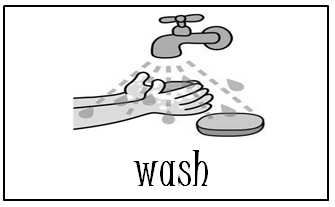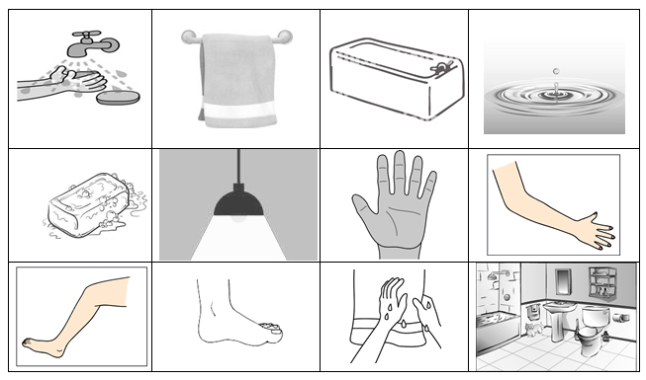INTRODUCING NEW VOCABULARY – FUN and PRACTICE
For many reasons, some children who are deaf don’t come to receive support in learning spoken language until they are school-aged. Intensive, structured instruction can lead these children to successful acquisition of spoken language. I’ve seen it happen.
This post will discuss how a family member, teacher or therapist can plan, teach and practice vocabulary for children who need accelerated language learning.
Language begins with vocabulary.
Infants begin their language development by learning words – names for things and actions. This is also where the older child needs to begin – by building a working vocabulary.
Quick note: To simplify pronoun choices, this post refers to Rina, who represents a child who is deaf. The name does not refer to any particular child, but was chosen by a random name generator. And ‘teacher’ is used to refer to anyone helping the child learn, whether at home, in therapy or at school.
Vocabulary can be practiced by topic, such as rooms of the house or daily routines.
Rina should be learning the names of the people, things and actions she encounters during her daily activities – emphasis on daily. Here are some basic principles.
- Vocabulary units should first be home-based, such as rooms of the house; then school-based, such as items in the classroom.
- Choose 8 to 15 words for each unit, depending on the child’s rate of learning.
- Don’t forget verbs! She will need them to build sentences.
- Children who are deaf often leave off the article of a noun (a, an, the). (We say it so quickly, Rina doesn’t hear it.) It is helpful to teach the article as part of the word.
Here are some examples for the bathroom.
Nouns: the water, the tub, a towel, some soap, the light, a hand, an arm, a leg, a foot.
Verbs: wash, turn-on (the water), dry

Children learn a word before they start using it.
The first sign that a child is learning a new word is that she can point to the picture of it when asked.
- First teach the word while looking at, pointing to the object, or, for verbs, doing the action. Find multiple examples of the word when possible (different lights around the home, washing various things, etc.)
2. When teaching a new word, repeat the word several times and require Rina to say it. Here’s how, Rina’s teacher introduces a new word.
“An arm. This is Rina’s arm. Say ‘arm’. One arm. Two arms. Rina has two arms.
3. Have the child show the object or action or point to it immediately after introducing it.
“Rina, show me an arm. Where is an arm? This is an arm! Is this an arm? Noooo! That’s a leg! Here’s an arm!”
Rina can’t yet point to her arm, so the caregiver does it for her, picking up Rina’s arm and shaking it playfully. This shows Rina what to do when she is asked to “Show an arm.” By also choosing a leg, Rina can begin to understand that an arm is a specific part of her body.
4. Make a picture card for each word. Consider taking photos showing the word that feature Rina. If you use clipart it should be realistic. Whatever you use, the picture should clearly represent the word.
It’s a good idea to post pictures of the vocabulary in the area where the words will be used most frequently. Pictures of ‘wash’, ‘hands’, ‘water’, ‘turn on’, and ‘soap’ can be posted above the bathroom sink appear while they are being learned. Writing the word on the picture helps build reading skills.
 BINGO is a fun way to practice newly-learned words.
BINGO is a fun way to practice newly-learned words.
When Rina has learned a few words from her current unit, her family can play vocabulary BINGO using pictures instead of letters and numbers. Use words from previous units to fill out your BINGO cards.
There are websites that create BINGO cards from your pictures. Or you can create a table in Microsoft Word and create your own in less than an hour.

